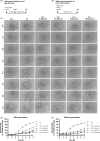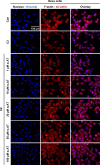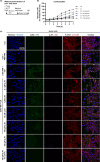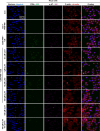Alpha-1 antitrypsin inhibits Clostridium botulinum C2 toxin, Corynebacterium diphtheriae diphtheria toxin and B. anthracis fusion toxin
- PMID: 39261531
- PMCID: PMC11390955
- DOI: 10.1038/s41598-024-71706-7
Alpha-1 antitrypsin inhibits Clostridium botulinum C2 toxin, Corynebacterium diphtheriae diphtheria toxin and B. anthracis fusion toxin
Abstract
The bacterium Clostridium botulinum, well-known for producing botulinum neurotoxins, which cause the severe paralytic illness known as botulism, produces C2 toxin, a binary AB-toxin with ADP-ribosyltranferase activity. C2 toxin possesses two separate protein components, an enzymatically active A-component C2I and the binding and translocation B-component C2II. After proteolytic activation of C2II to C2IIa, the heptameric structure binds C2I and is taken up via receptor-mediated endocytosis into the target cells. Due to acidification of endosomes, the C2IIa/C2I complex undergoes conformational changes and consequently C2IIa forms a pore into the endosomal membrane and C2I can translocate into the cytoplasm, where it ADP-ribosylates G-actin, a key component of the cytoskeleton. This modification disrupts the actin cytoskeleton, resulting in the collapse of cytoskeleton and ultimately cell death. Here, we show that the serine-protease inhibitor α1-antitrypsin (α1AT) which we identified previously from a hemofiltrate library screen for PT from Bordetella pertussis is a multitoxin inhibitor. α1AT inhibits intoxication of cells with C2 toxin via inhibition of binding to cells and inhibition of enzyme activity of C2I. Moreover, diphtheria toxin and an anthrax fusion toxin are inhibited by α1AT. Since α1AT is commercially available as a drug for treatment of the α1AT deficiency, it could be repurposed for treatment of toxin-mediated diseases.
Keywords: Clostridium botulinum C2 toxin; Anthrax toxin; Diphtheria toxin; Drug repurposing; Toxin inhibitor; α1-Antitrypsin.
© 2024. The Author(s).
Conflict of interest statement
The authors declare no competing interests.
Figures







Similar articles
-
Cellular uptake of Clostridium botulinum C2 toxin: membrane translocation of a fusion toxin requires unfolding of its dihydrofolate reductase domain.Biochemistry. 2003 Dec 30;42(51):15284-91. doi: 10.1021/bi0354278. Biochemistry. 2003. PMID: 14690438
-
The host cell chaperone Hsp90 is essential for translocation of the binary Clostridium botulinum C2 toxin into the cytosol.J Biol Chem. 2003 Aug 22;278(34):32266-74. doi: 10.1074/jbc.M303980200. Epub 2003 Jun 12. J Biol Chem. 2003. PMID: 12805360
-
FK506-binding protein 51 interacts with Clostridium botulinum C2 toxin and FK506 inhibits membrane translocation of the toxin in mammalian cells.Cell Microbiol. 2012 Aug;14(8):1193-205. doi: 10.1111/j.1462-5822.2012.01788.x. Epub 2012 Apr 12. Cell Microbiol. 2012. PMID: 22420783
-
Clostridium botulinum C2 toxin--new insights into the cellular up-take of the actin-ADP-ribosylating toxin.Int J Med Microbiol. 2004 Apr;293(7-8):557-64. doi: 10.1078/1438-4221-00305. Int J Med Microbiol. 2004. PMID: 15149031 Review.
-
Structure, Function and Evolution of Clostridium botulinum C2 and C3 Toxins: Insight to Poultry and Veterinary Vaccines.Curr Protein Pept Sci. 2017;18(5):412-424. doi: 10.2174/1389203717666161201203311. Curr Protein Pept Sci. 2017. PMID: 27915984 Review.
Cited by
-
Alpha-1 antitrypsin inhibits pertussis toxin.J Biol Chem. 2024 Dec;300(12):107950. doi: 10.1016/j.jbc.2024.107950. Epub 2024 Oct 30. J Biol Chem. 2024. PMID: 39481600 Free PMC article.
-
The antimicrobial peptide Angie 5 inhibits TcdA and TcdB from Clostridioides difficile.Cell Mol Life Sci. 2025 Jun 30;82(1):265. doi: 10.1007/s00018-025-05799-2. Cell Mol Life Sci. 2025. PMID: 40586877 Free PMC article.
References
MeSH terms
Substances
Grants and funding
LinkOut - more resources
Full Text Sources
Miscellaneous

